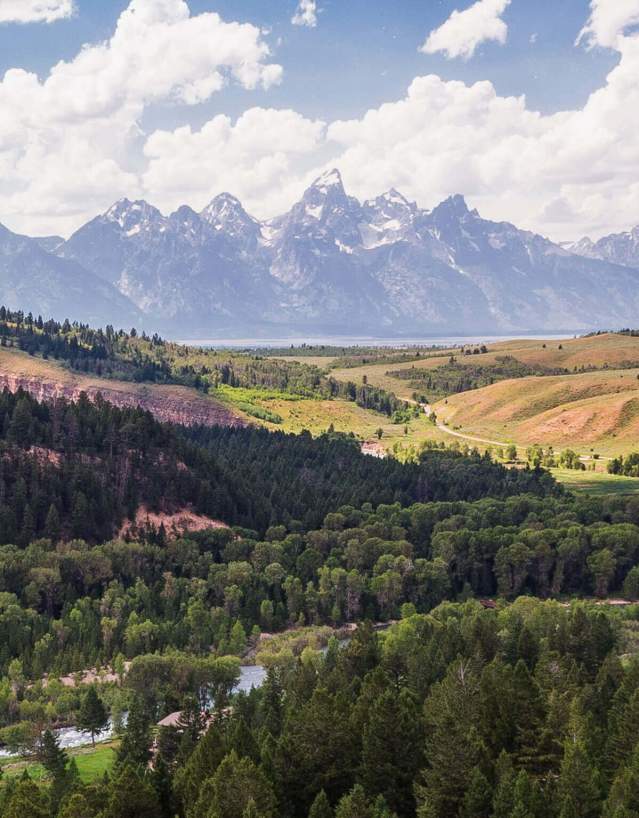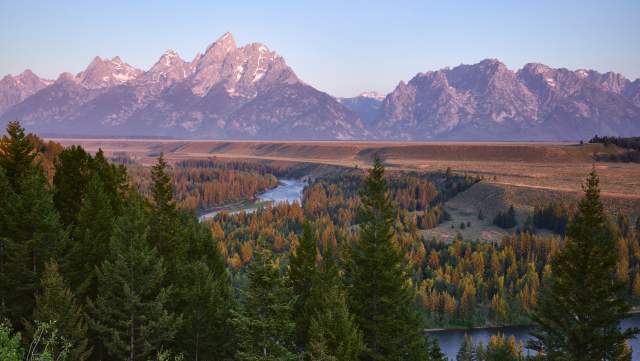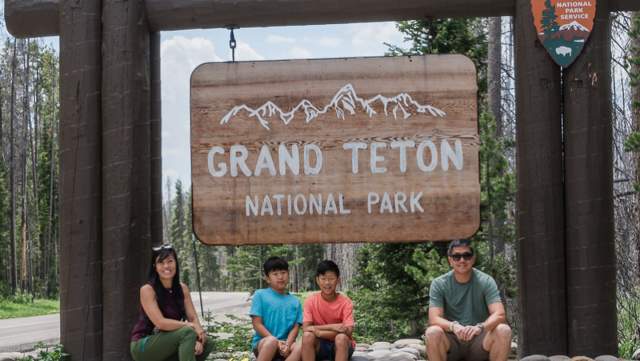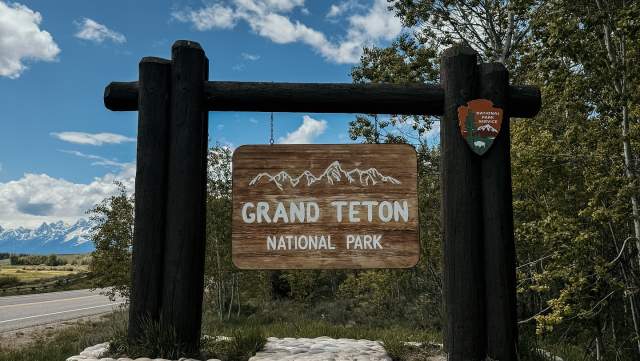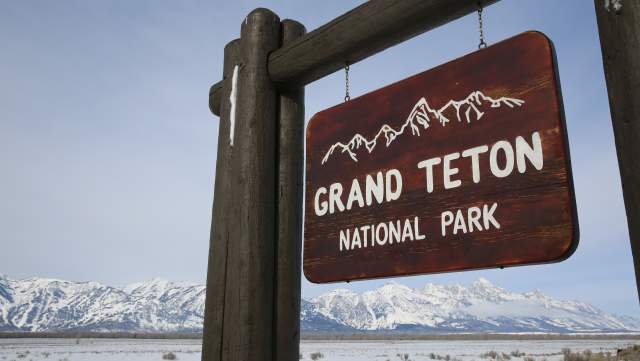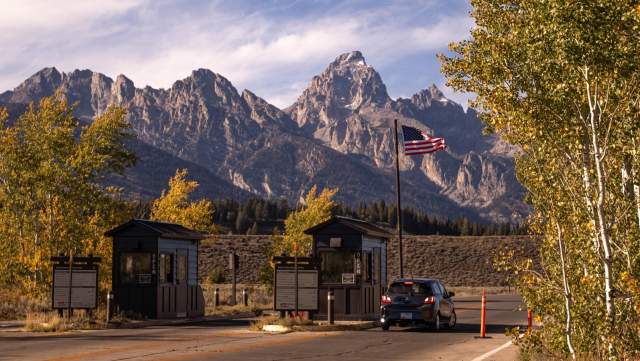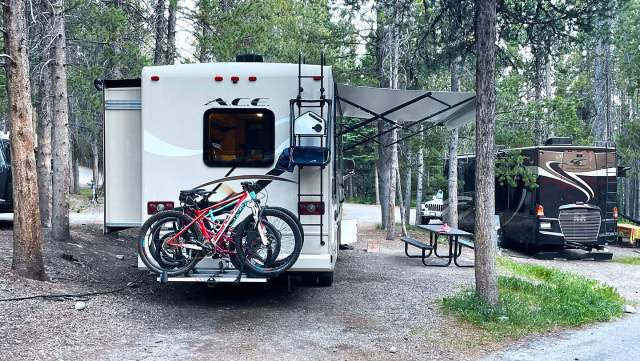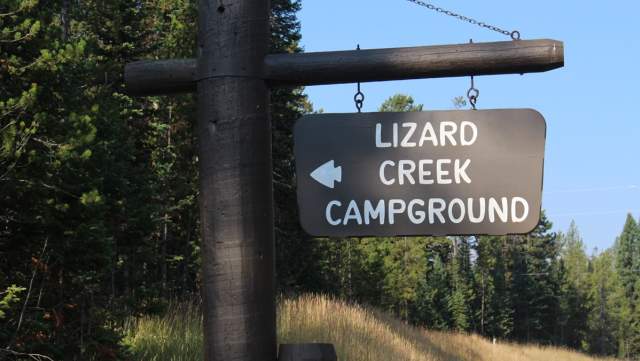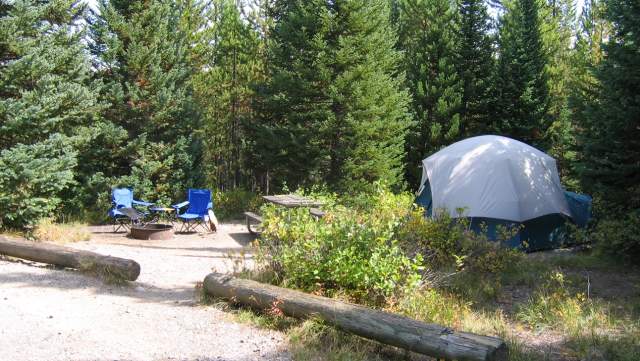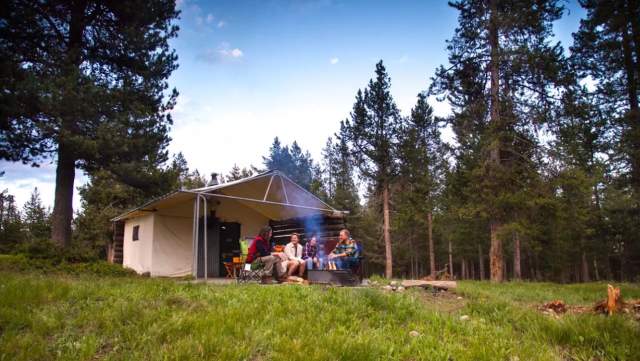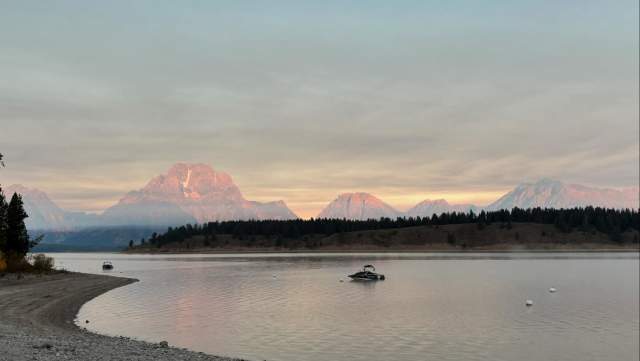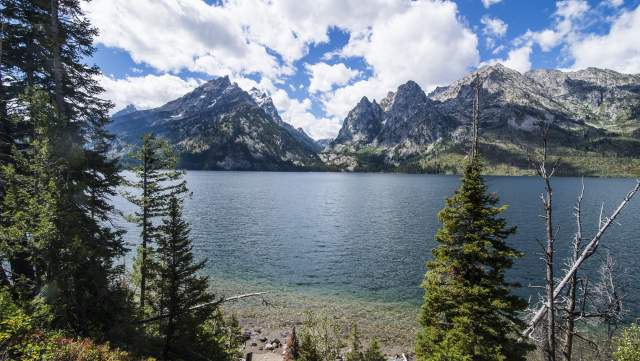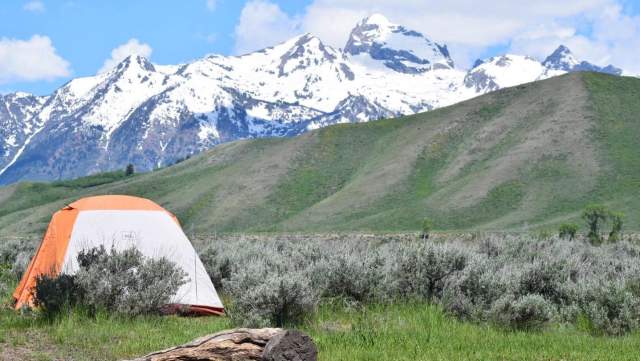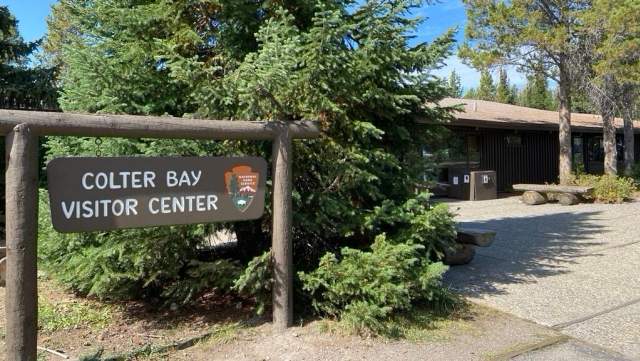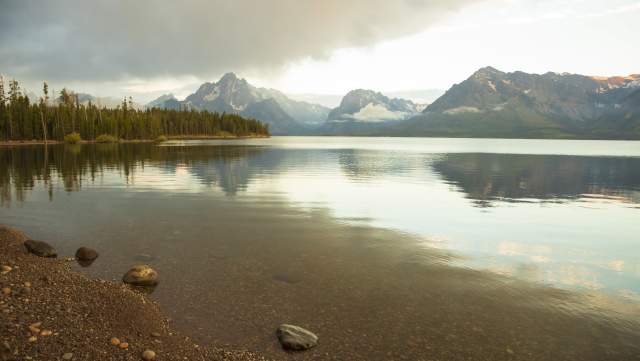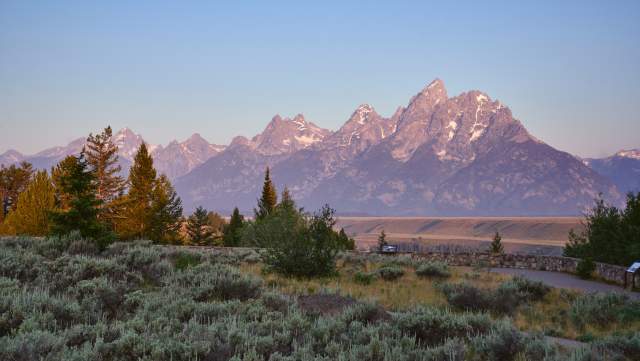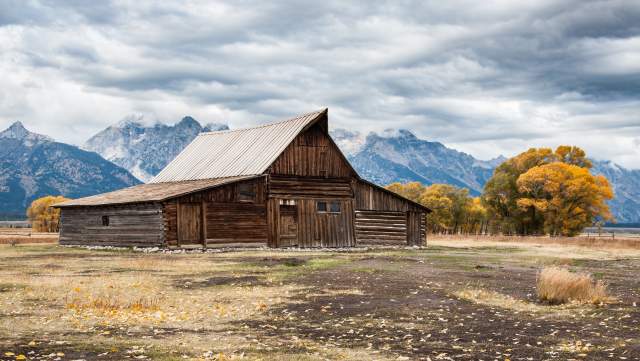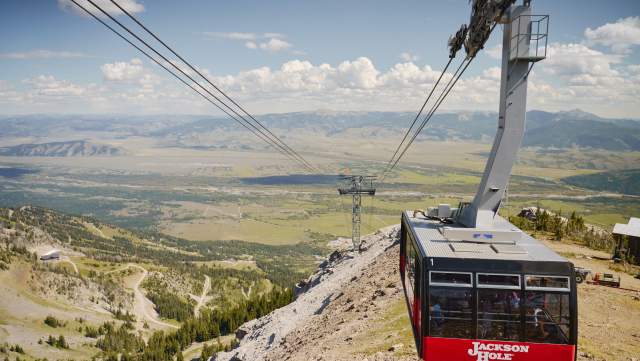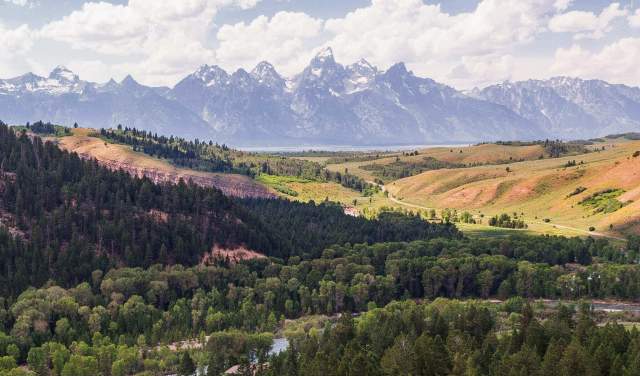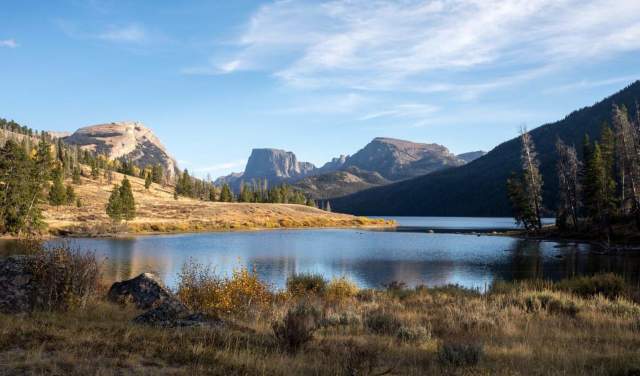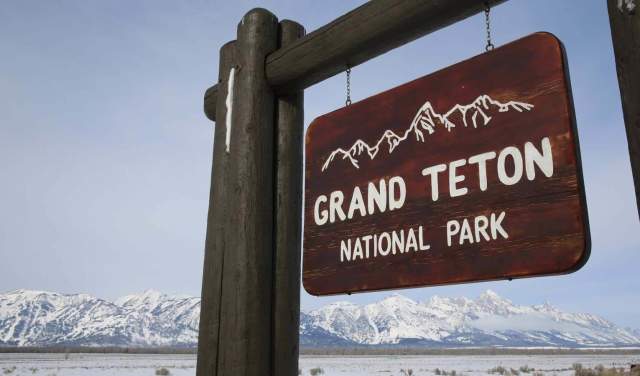Your browser is not supported for this experience.
We recommend using Chrome, Firefox, Edge, or Safari.
Grand Teton National Park
Grand Teton National Park, with its towering 13,775-foot peaks, boasts 310,000 acres of lush valley floors, mountain meadows, alpine lakes, and the rising peaks of the Grand Teton Mountain Range.
Located just north of Jackson, Wyoming, Grand Teton has a diverse and long-standing history that includes human use from more than 11,000 years ago. Nomadic Indians, American Indian tribes, early American explorers and permanent settlers once called this national park home. Today, you can explore the park’s extensive history and culture through ranger-led programs, visitor centers and historical points of interest like Mormon Row and the Moulton Barns. In addition to a fascinating history, Grand Teton’s stunning landscapes and diverse wildlife provide the perfect location for nature lovers and outdoor adventurers. Delve deeper into this region’s breathtaking scenery with a backpacking trip (permits required). Or start planning and booking your stay early to reserve campsites or comfortable lodging within park boundaries. Wherever you rest your head, make sure you wake up ready to explore all the activities Grand Teton offers, including hiking, boating, rock climbing, wildlife tours and more.
Map Out Your Grand Teton Adventure
Spanning 310,000 acres, Grand Teton National Park sits in the heart of the Greater Yellowstone Ecosystem. Home to 61 varieties of mammals, more than 300 bird species, lush valley floors, pristine lakes and more, it's no surprise that Grand Teton is a beloved destination for outdoor enthusiasts. With so much to explore, you might find yourself wondering "Where should I start?”. Before your visit, use this interactive map to pinpoint entrances, visitor centers, must-see attractions, lodging options and things to do in Wyoming.
Grand Teton North Boundary Turnout (via Yellowstone)
The Grand Teton North Boundary Turnout, perched atop Huckleberry Hill, is located 11.7 miles from Colter Bay and 6.8 miles from Yellowstone National Park. This spot marks the boundary between the National Park and John D. Rockefeller, Jr. Memorial Parkway. Before you set off on your adventure, take a photo of the rustic wooden park sign and the towering lodgepole pines that blanket the hill.
Moran Entrance (Dubois)
Named after Thomas Moran, a landscape artist from the 1872 Hayden expedition to Yellowstone, this entrance is just a quarter mile north of Moran Junction on U.S. Route 89/191/287 and provides access to northern Grand Teton National Park. Beyond the gate lies sagebrush meadows and lodgepole forests, while Oxbow Bend, 2.5 miles west, offers excellent wildlife spotting opportunities and stunning views of Mount Moran.
Granite Canyon Entrance
Venture 1.5 miles north of Teton Village on Moose-Wilson Road to enter the southern portion of Grand Teton National Park, where the road winds through wildlife habitats comprising sagebrush, forest and wetlands.
South Park Entrance (Moose)
The Moose Entrance station is one of four entrances to Grand Teton National Park. After driving twenty miles north from the town of Jackson on US 26/89/191, turn west at Moose Junction to get on Teton Park Road. A mile further, you will see the entrance booths.
Headwaters Campground
If you're looking for the perfect base camp to explore both Grand Teton and Yellowstone, Headwaters Campground is the ideal place to pitch your tent or park your RV. This area is also surrounded by gorgeous mountains and valleys, so be sure to pack your camera!
Lizard Creek Campground
Set within a forest on the shores of Jackson Lake, this remote campground lies eight miles north of Colter Bay Village and 11 miles south of Yellowstone, providing easy access to both parks.
Colter Bay Campground
This expansive campground and RV park provides convenient access to the many facilities and amenities of nearby Colter Bay Village, including a visitor center, restaurants, shops and a marina. A short walk from the campground rewards campers with impeccable views of Mount Moran and the northern Teton Range.
Colter Bay Tent Village
Poised amidst lodgepole pines, the Colter Bay Village Campground is just a short walk from Jackson Lake and features 66 tent cabins. These unique lodging options are unlike any other in Yellowstone or Grand Teton and are a great option for a summer getaway.
Signal Mountain Campground
This picturesque campground, set in an open lodgepole pine forest near the Signal Mountain Lodge, offers sites near and above Jackson Lake. Revel in the wonders of nature while enjoying views of Mount Moran and the northern Teton Range.
South Jenny Lake Trail & Jenny Lake Campground
Just a few hundred yards from the east shore of Jenny Lake, this small but scenic campground is nestled on a glacial moraine thick with lodgepole pine, subalpine fir and Douglas fir. Gaze across the lake and you'll be treated to views of Teewinot Mountain, Cascade Canyon and Mount St. John.
Gros Ventre Campground
Situated in the southeast portion of the park near Jackson, Gros Ventre is the park's largest campground, with 322 reservable sites. During your trip, take a short walk to the Gros Ventre River and be sure to keep your eyes peeled for resident bison, moose and mule deer.
Colter Bay Visitor Center
Located on the shore of Jackson Lake, this visitor center is a great starting point for exploring the park. During your time here, attend a ranger-led program, stop by the Grand Teton Association Bookstore or check out the park film. The visitor center also hosts the Indigenous Arts and Cultural Demonstrations Program, offering a chance to meet and see artists at work.
Jackson Lake
Jackson Lake, the park's largest lake, is a natural body of water raised by a 39-foot-tall man-made dam. While visiting, enjoy fishing, kayaking, cruising and waterfront camping on one of the lake's islands.
Grand Teton Range
Rising to 13,770 feet, the Grand Teton is the tallest mountain in the Teton Range. This rugged masterpiece and its neighboring peaks are known for their remarkable beauty, making this area a must-see for wildlife lovers and outdoor enthusiasts.
Mormon Row
In the 1890s, Mormon settlers from Idaho arrived to establish a new community east of Blacktail Butte, creating a cluster of 27 homesteads known as "Mormon Row." Today, visitors can explore historic structures that still stand, including the Chambers Homestead and the iconic Moulton Barns.
Jackson Hole Aerial Tramway
Climb aboard the Jackson Hole Aerial Tram for incredible panoramic views of the Tetons, Jackson Hole Valley and the surrounding mountain ranges. In just 12 minutes, you'll ascend 4,139 feet, gaining access to a wide variety of hiking and running trails, climbing opportunities and more.
Wildlife Safety
For the safety of wildlife and visitors, please keep your distance from all animals. It's recommended to stay at least 100 yards away from bears and wolves and at least 25 yards away from all other wildlife.
*Not for navigational purposes
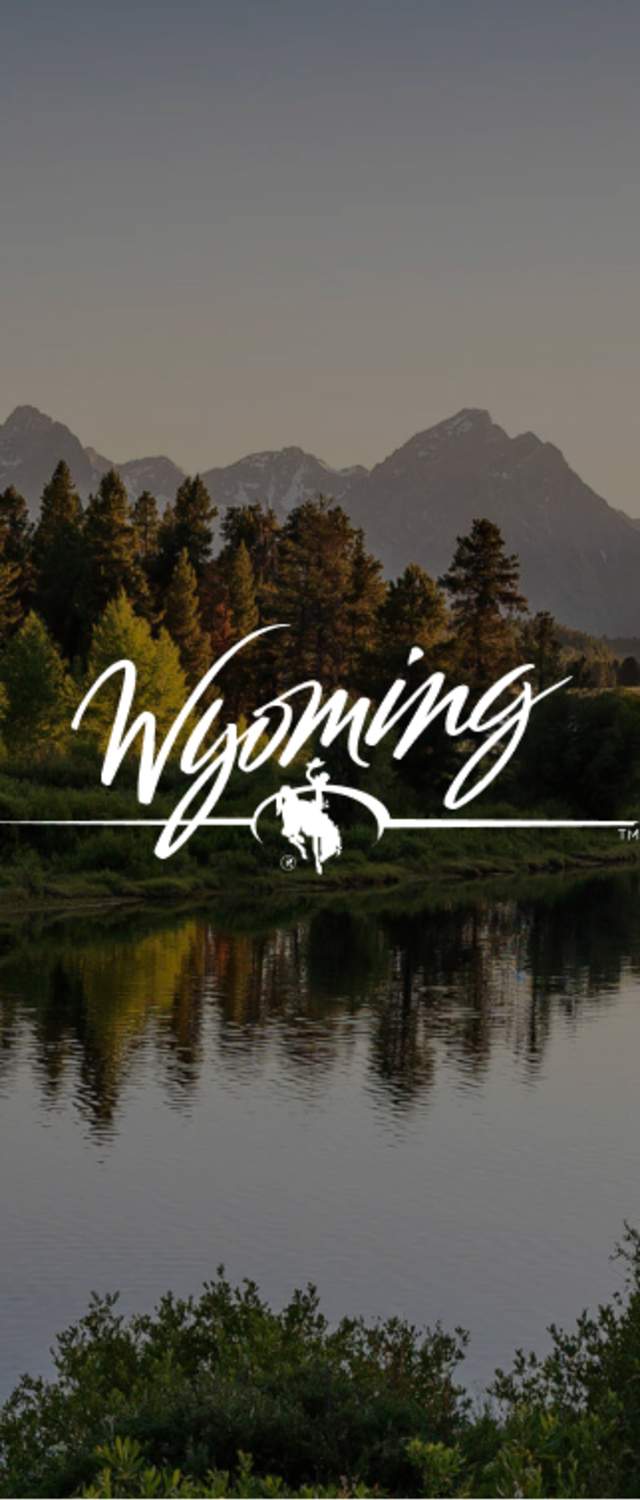
Related Articles & Itineraries
Top 12 Things to Do in Grand Teton National Park
- 8 min read
Like the Tetons? You'll Love these Nearby Hidden Gems
- 7 min read
Grand Teton in Winter: The Ultimate Visitor's Guide
- 8 min read
What to Know Before You Go
Where is Grand Teton National Park located?
Grand Teton National Park is in the northwest region of Wyoming, just 10 minutes north of Jackson Hole. It sits just below Yellowstone National Park.
Why is Grand Teton National Park famous?
Grand Teton National Park is famous for its jagged mountain peaks, which create a stunning skyline. The park is also well known for some of the best wildlife viewing in the United States. Learn more about Grand Teton National Park today.
How big is Grand Teton National Park?
Grand Teton National Park is about 310,000 acres or 485 square miles.
Is Grand Teton National Park open?
Grand Teton National Park is open year-round. However, many roads and facilities close during the winter months, which is typically mid-October through late May. Learn more about experiencing Grand Teton National Park in the winter.
How to Plan Your Grand Teton Adventure
What is there to do in Grand Teton National Park?
Grand Teton National Park offers plenty to do. Hiking, backpacking, rock climbing, scenic drives, wildlife viewing and camping are some options. With six large lakes at the base of the Tetons and more than 100 alpine and backcountry lakes, Grand Teton National Park is also a prime location for boating and fishing.
Where can I stay in Grand Teton National Park?
Grand Teton National Park offers a number of cabins, lodges and ranches for you to stay in within the park’s boundaries. You can also enjoy one of seven park campgrounds, all of which require reservations.
How do I get to Grand Teton National Park?
Located in northwest Wyoming, there are several ways to get to Grand Teton National Park. From Salt Lake City, Utah, drive east on I-80 to Evanston, Wyoming, and take US-89 north. This highway travels through Wyoming’s Star Valley, a series of towns nestled beneath the Salt River Range. From Rock Springs, Wyoming, travel north along US-189, taking time to enjoy the Wind River Range near Pinedale along the way. Jackson Hole Airport is conveniently located minutes from the Grand Teton’s Moose Entrance. To Discover more ways to get to Grand Teton along different Wyoming regions and routes.
How many days do you need in Grand Teton National Park?
Spending 2 to 3 days in Grand Teton National Park should give you enough time to explore the area. View our Grand Teton National Park itinerary for ideas.
What is the best time to visit Grand Teton National Park?
Spring and fall stand out as the best times to visit Grand Teton National Park, offering incredible opportunities to spot wildlife and view vibrant fall colors, all amidst fewer crowds. Before you set off on your outdoor escapades, equip yourself with these essential tips on responsible recreation.
Do you need a fishing license in Grand Teton National Park?
A Wyoming fishing license is required for adult residents and nonresidents while visiting Grand Teton National Park. Residents under 14 may fish without a license, but nonresidents under 14 must be accompanied by an adult with a valid license. Head to our fishing page to find out more.
